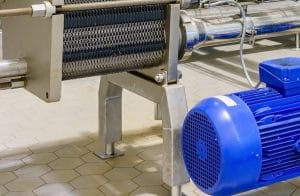 Today’s heat exchangers and similar thermal management solutions come in all shapes and sizes, utilize a variety of heat transfer methods, and can often be customized to meet the unique needs of the most innovative applications. Many of the most common variations involve the use of high-performance heat pipes or liquid cold plate heat exchangers, depending on the application’s specific needs and preferences. While both designs offer many important, wide-ranging benefits, those benefits differ depending on the specific company, industry, and application for which the solution is being used.
Today’s heat exchangers and similar thermal management solutions come in all shapes and sizes, utilize a variety of heat transfer methods, and can often be customized to meet the unique needs of the most innovative applications. Many of the most common variations involve the use of high-performance heat pipes or liquid cold plate heat exchangers, depending on the application’s specific needs and preferences. While both designs offer many important, wide-ranging benefits, those benefits differ depending on the specific company, industry, and application for which the solution is being used.
Liquid cold plate heat exchangers
Cold plate heat exchangers are designed to transfer high levels of electrical waste heat at rapid paces by utilizing the advantages of liquid cooling capabilities. Metal plates carry an eco-friendly cooling fluid that flows through paths that are machined into them. When heat is exposed the outside of the plate, it is transferred to the liquid on the other side, which carries it safely away from the heat source. The fluid releases the waste heat into a dissipation unit, such as heat sink, where it cannot collect into potentially hazardous heat pockets. Cold plates can also be designed to fit into extremely limited spaces while still providing optimal, high-performance thermal management.
Dissipating heat with heat pipes
Heat pipes also transfer electrical waste heat in highly efficient and eco-friendly methods, such as phase-change cooling. They’re lined with a capillary wicking material to ensure that moisture evenly meets every surface of the pipe. The environmentally friendly fluid, usually water, absorbs the heat until it reaches its latent heat of vaporization, at which point it changes phase (evaporates) and becomes less dense. The heated fluid easily travels away from the heat source, though methods such as natural/forced convection can help facilitate faster, more efficient heat transfer. In addition to providing highly reliable thermal management, heat pipes can be designed to bend and fit any plane as needed.
Custom-designing thermal solutions
While cold plates, heat pipes, and other solutions give companies and technology designers a much broader range of thermal management options, some applications require a higher level of customization. By utilizing heat exchanger technology and adapting it to specialized needs, companies can benefit even further from their advanced heat transfer concepts. For example, in the molding industry, specialized heat exchangers called thermal pins provide a highly efficient and innovative way to streamline the machine tool cooling process for faster, higher-quality molds.
For more information about choosing between heat pipes and cold plate heat exchangers, call Noren Thermal Solutions in Taylor, TX, at 866-936-6736.







